We have much more to do and your continued support is needed now more than ever.
3 Wildlife-Friendly Ways to Explore the Everglades
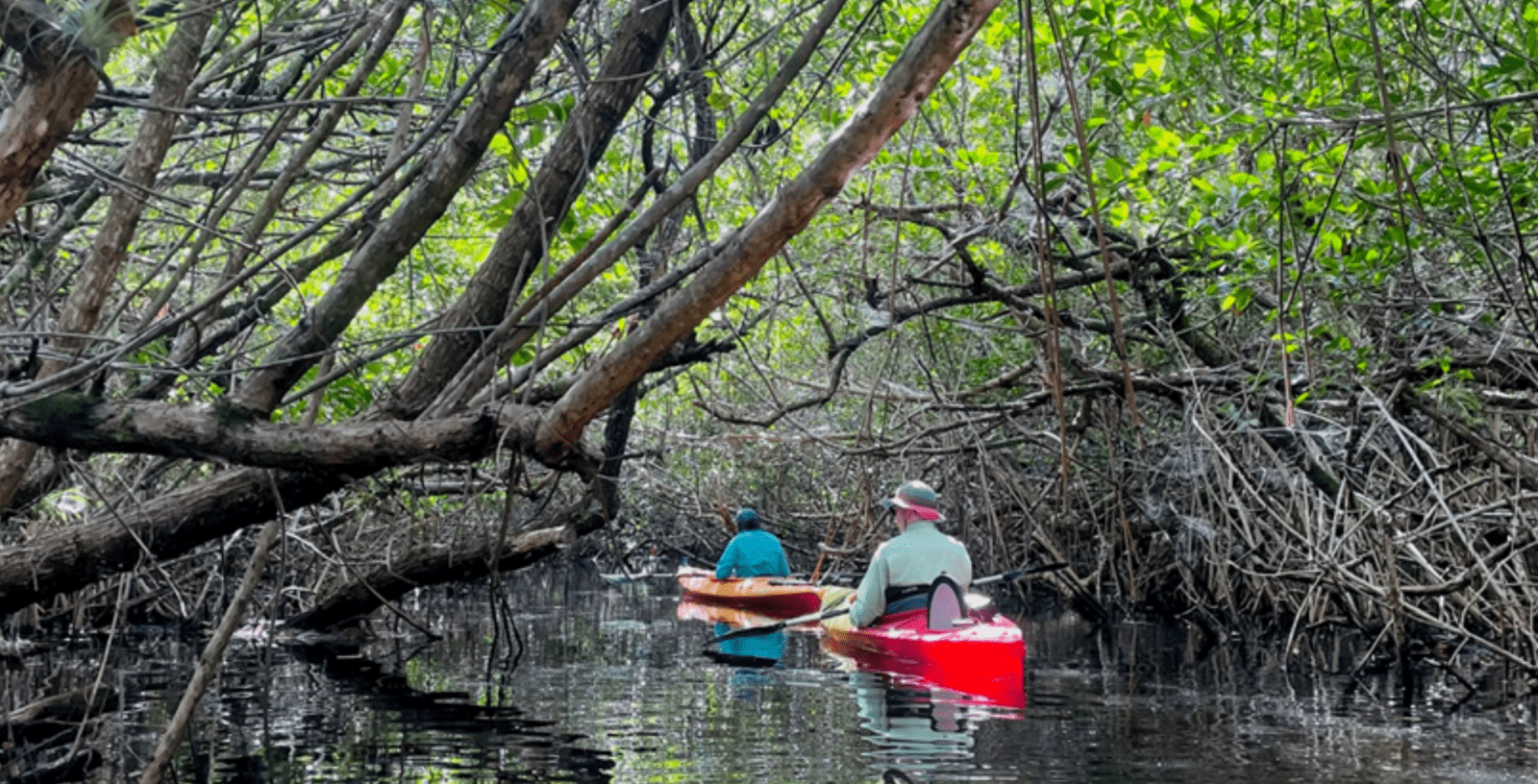
The Everglades are a true American treasure, renowned for breathtaking wilderness and spectacular wildlife. People travel from all around the world for first hand experiences of this iconic region that stands as one of the last remaining testaments to true Old Florida.
When visiting the Everglades, it’s important to respect the wildlife and leave a minimal impact on their home. We’ve compiled a few suggestions of ways to enjoy the Everglades responsibly and sustainably.
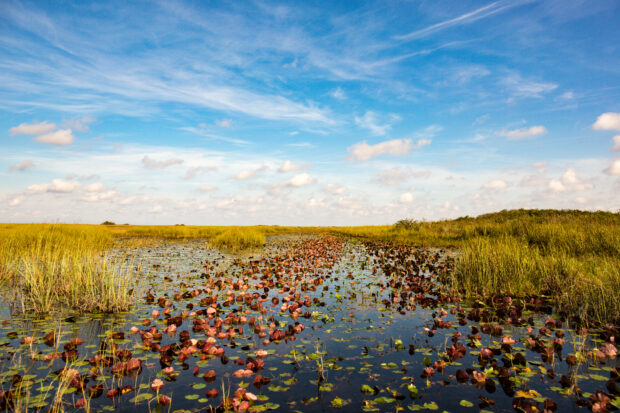
Explore By Water
Affectionately referred to as the “River of Grass,” the Everglades is an enormous system of slow-moving freshwater that winds through cypress swamps, wet prairies, and mangroves. To explore this watery wonderland, people can join boat tours or paddle out with kayaks and SUPs.
Nestled within the Ten Thousand Islands ecosystem, the The Rookery Bay NERR (National Estuarine Research Reserve) protects 110,000 acres of mangroves and waters along the coast. Part of the NOAA NERR System, Rookery Bay protects wildlife and allows opportunities for research and education.
Visitors can book a motor boat tour to see coastal wildlife including manatees, dolphins, and countless coastal birds. If you prefer an even more immersive experience within Rookery Bay, kayak tours and rentals are also available.
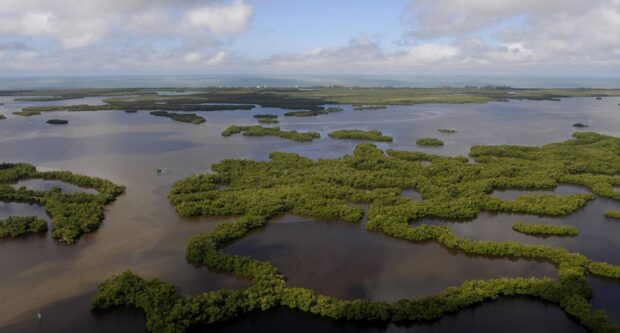
There are many places within The Everglades where you can kayak, canoe or SUP! These motor-free watercraft offer an excellent opportunity to experience wild places without generating noise pollution or risking injury to animals and their homes from a spinning prop.
Check out your local rental agencies, remember to give wildlife their space, and enjoy! One of our favorite places to kayak is through the Turner River Paddling Trail in Everglades National Park.
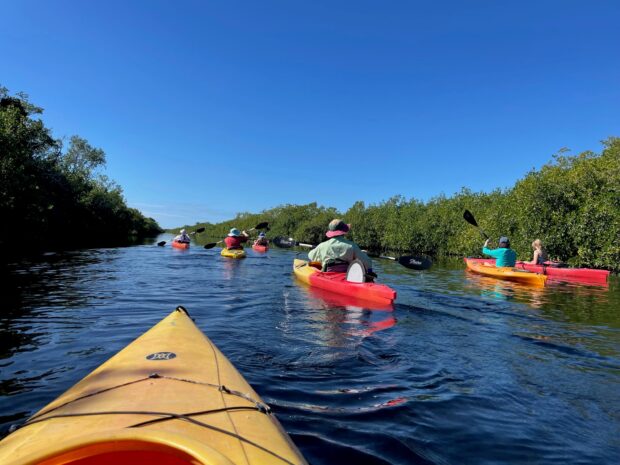
Want to get underwater? Take a short drive from Everglades National Park to Biscayne National Park where you can swim, snorkel and SCUBA dive in clear blue waters teeming with vibrant marine life.
Explore on Foot
Wait a minute, Florida doesn’t have any mountains. How can you hike The Everglades? Well, you hike the Florida way!
For newer Everglades explorers, a visit to the Audubon Corkscrew Swamp Sanctuary is a fantastic way to spend the day in nature. The maintained pathways of this sanctuary wind through 13,450 acres through the western Everglades, showcasing “the largest remaining, virgin bald cypress forest in the world.”
On any given day you can expect to find a myriad of iconic wildlife including gators, river otters, turtles, treefrogs, pollinators, and of course dozens of bird species like the roseate spoonbill and wood stork.
The sanctuary is maintained by NWF’s nonprofit partner, the National Audubon Society, and weekly wildlife sightings are updated here.
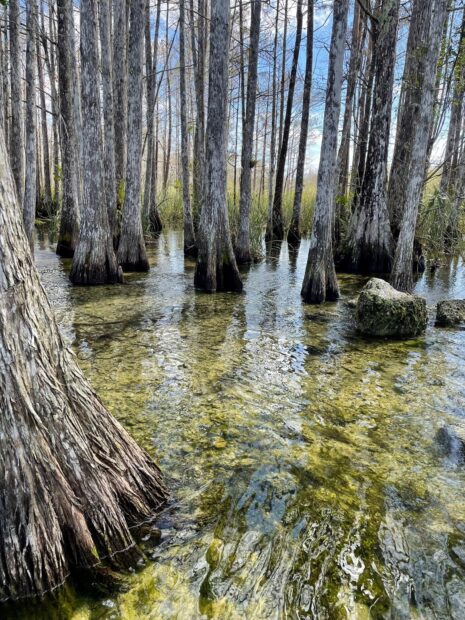
If you have plenty of miles in your hiking boots, you might be interested to try a wet walk/wet hike. The Big Cypress National Preserve is a marvelous part of The Everglades National Park where the fresh water begins to meet the sea.
You can sign up for a guided wet walk with a Park Ranger, or if you have plenty of miles in your hiking boots, you might be keen to venture out into the Florida wilderness on your own accord. One of our favorite trails for such a wet hike is the Concho Billie Trail.
Remember to wear shoes that you don’t mind getting wet and muddy, cover your skin from sun and bugs, and always bring a buddy!
Explore on Wheels
The Shark Valley Visitor Center within Everglades National Park offers 15 miles of paved, flat roads for an idyllic bike through nature. You can rent a bike nearby or bring your own to coast through several unique habitats. Although you probably won’t encounter any sharks here, you can expect to observe a myriad of birds, fish and alligators in their natural surroundings.
In addition to this trail, there are four more bike trails in Everglades National Park.
For a less physically intensive experience in Shark Valley, there is a tram tour offered along the same 15 mile path. The tour will take you to an observation tower for unbeatable vistas of The Everglades as far as the eye can see.
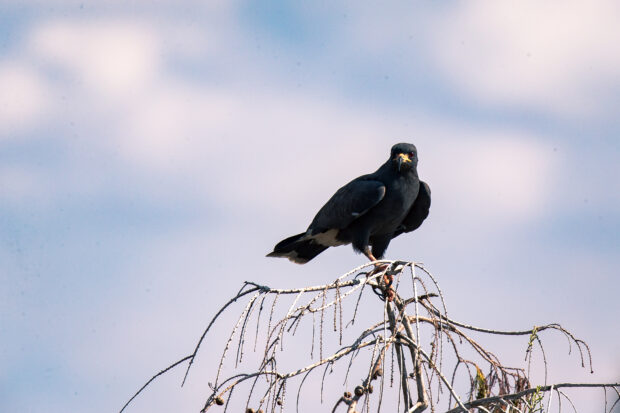
Now you’re ready to enjoy the Everglades, too! Get outside, get exploring, and help NWF protect wild Florida!
National Wildlife Federation’s Work in the Everglades
NWF advances projects that restore America’s Everglades and send clean water south to feed Everglades National Park and Florida Bay. One on-the-ground example is the construction of the Everglades Agricultural Area Reservoir, a keystone project that reconnects the freshwater flow through the Everglades and reduces harmful discharges of polluted water to both east and west coast Florida.





















